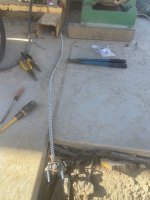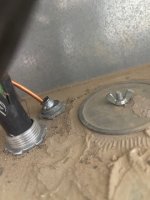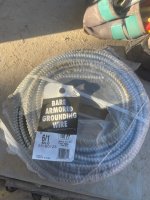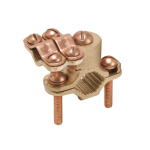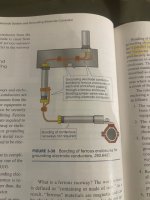Jpflex
Electrician big leagues
- Location
- Victorville
- Occupation
- Electrician commercial and residential
NEC code requires that if metal conduit / protective cover is used on the grounding electrode conductor especially whether it is 6 AWG but exposed to physical damage, then the conduit / metal sheathing must be bonded at both ends to the grounding electrode conductor.
Since the armor cable which comes with the solid (another code violation) #6 AWG solid grounding electrode conductor slides within the sheathing armor it is not electrically bonded at both ends to the solid grounding electrode conductor as it is so do inspectors just overlook this or what?
Also would mc type bonding bushings be required at the end of armor sheath cables when entering a cabinet to neutral?
Since the armor cable which comes with the solid (another code violation) #6 AWG solid grounding electrode conductor slides within the sheathing armor it is not electrically bonded at both ends to the solid grounding electrode conductor as it is so do inspectors just overlook this or what?
Also would mc type bonding bushings be required at the end of armor sheath cables when entering a cabinet to neutral?


